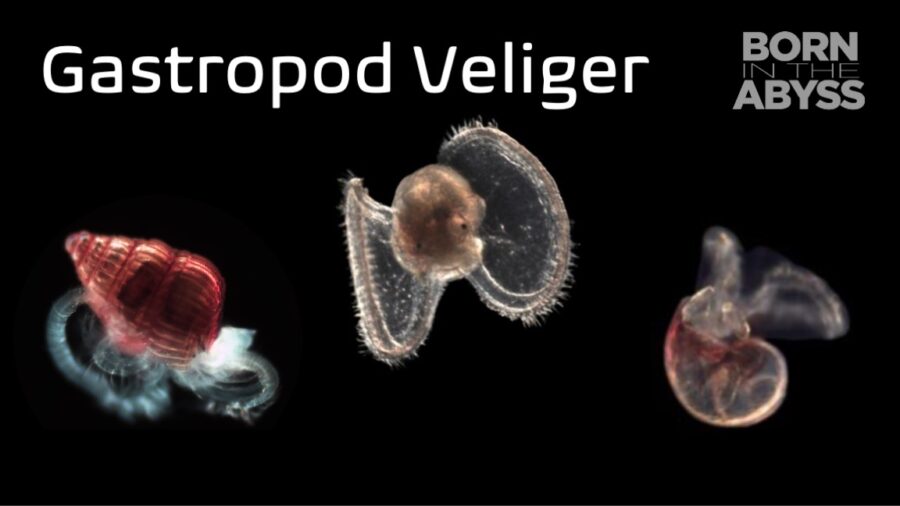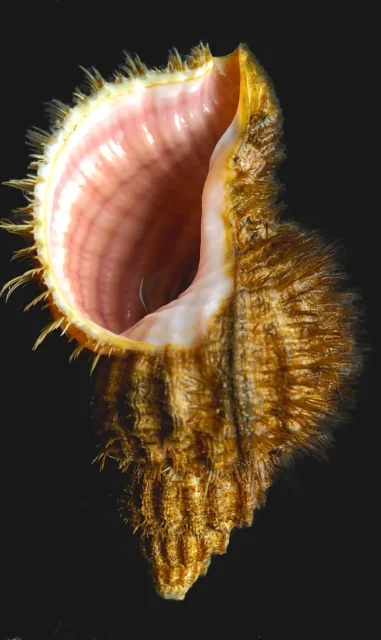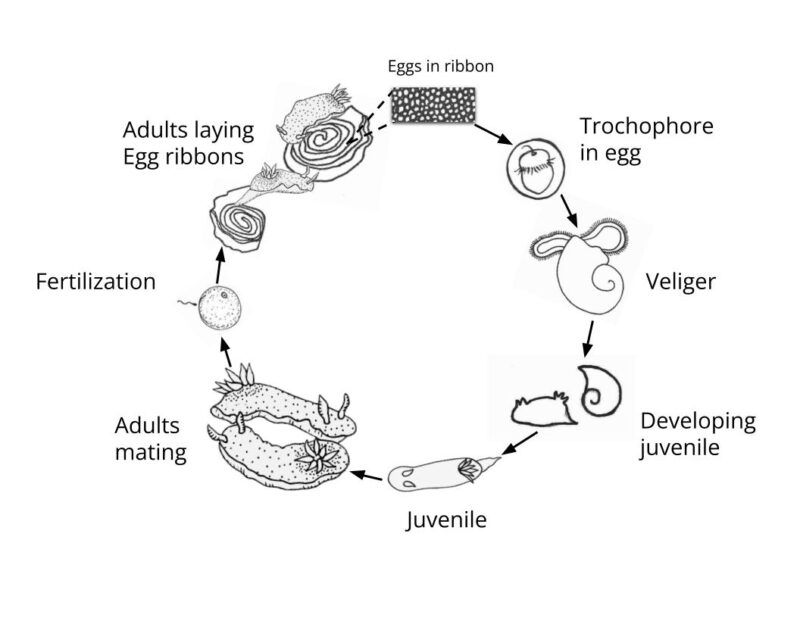
Gastropod Veliger
Plural: Gastropod Veligers
"Gastropod" comes from the Greek words "gaster" and "poús," which mean "stomach foot"
"Veliger" is frim the Latin words "velum" and "-ger," which together mean "sail carrying"
Parents: Sea snails and slugs, including abalone, whelks, and limpets
Food: Microscopic algae called phytoplankton
Size: About 500 microns tall = 0.5 millimeters = 0.02 inches

The Oregon Hairy Triton, a large predatory snail. Photo by McKenna Hainey.
Larval Form and Function
Watch this compilation video to learn more about the movement, anatomy, and feeding of the gastropod veliger larva.
Life Cycle of a Sea Slug

Drawn by Nadia Stoker
- Gastropod veligers only occur in some gastropod molluscs and can be preceded by a trochophore larval stage.
- Adult gastropods can be male, female, or both (hermaphrodites), depending on the species.
- Most gastropods have internal fertilization, and the female lays egg capsules on rocks or the seafloor. These capsules can hatch as veliger larvae or juveniles.
- Gastropods can spend days to months as veligers, eating microscopic algae known as phytoplankton. Adult gastropods can live from a few years to a decade and, depending on the species, consume a variety of foods.
- Nudibranchs (sea slugs), like the ones in the above life cycle, are hermaphrodites, and two individuals can fertilize each other. Both can then lay egg ribbons, which contain anywhere from just a few to over 25 million eggs. The resulting veliger larvae have the typical gastropod shells, but drop them when they metamorphose into a juvenile.
Larval Quest Activity
Developed by Nadia Stoker and Caitlin Plowman as outreach and education materials accompanying the Born in the Abyss film.
The Stephen Low Company
Oregon Institute of Marine Biology, University of Oregon
National Science Foundation

